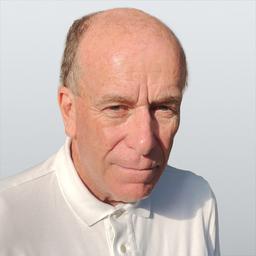HAWORTH, N.J.—Growing the game of golf has been a constant talking point from a wide variety of the sport’s key stakeholders. Far too often, the phrase is repeated in a general manner. But the actual implementation is more problematic. Acknowledgement of an issue is one thing, and producing meaningful results quite another.
Clearly, the global pandemic caused a spike in the total number of people taking up the sport.
Others in the golf lane sought to include various other non-traditional 18-hole connections. Short courses were created. The traditional driving range model has been revamped to be a comprehensive entertainment center.
The United States Golf Association (USGA)—governing body of the sport in the United States and Mexico since 1894—conducts various national championships annually and is headlined by the U.S. Open in June of each year.
In 2022, the USGA created its 15th and most recent national championship—the U.S. Adaptive Open (USAO).
The event was created specifically for those with various disabilities and impairments.
Stephanie Parel, championship director for the event, outlined the reasoning for the event’s inception.
“The USGA is always striving to further unify the game by creating equal playing opportunities for all races, genders, ages and now, people with disabilities,” Parel said.
“The organization had been supporting adaptive golf in a number of different ways and wanted to create a national championship for this deserving and inspiring demographic of players.”
Fittingly, the first two events were hosted at the St. Andrews of USA golf—Pinehurst in North Carolina.
It’s open to both male and female golfers with a WR4GD (World Ranking for Golfers with Disability) Pass and a Handicap Index of 36.4 or less. The tournament is contested over 54 holes of stroke play and features multiple sets of tees.
The USGA has been supporting adaptive golf in a number of different ways and decided to create a national championship for the deserving and inspiring demographic of players.
The USAO represents the latest step in the USGA’s journey to support golfers with disabilities, including the creation of the Modified Rules of Golf for Players with Disabilities and longtime support through the USGA Grants Program.
The initial success of the event prompted the USGA to create eight qualifying sites this year with the championship final scheduled for Woodmont Country Club (South Course) in Rockville, Maryland, on July 7–9.
One of the eight events took place last week at Haworth Country Club in Bergen County—located west of New York City in New Jersey.
The spirit of golf was front and center with competitions held for both men and women. An overall winner for both genders was awarded.
The men competed in different specific categories—coordinated impairment, lower limb impairment, multiple limb amputee, seated players, short stature and upper limb impairment. The women competed in just the categories of lower and upper limb impairment.

The men’s overall winner was Jack Bonifante, who has competed in each edition of the USAO. Bonifante ended up earning medalist honors at Haworth after edging Brandon Canesi in a four-hole playoff.
“I played in a team event two weeks ago and was in another playoff. I am trying to find less stressful golf but have been finding more stressful golf. To come back on the fourth playoff hole and make an eight-footer after missing a four-footer on the second [playoff] hole, I am proud of myself for not getting too low after that,” Bonifante said.
“The tournament will be played about 20 minutes from my house. I hold the USGA in high regard, and to be a medalist at a qualifier, I don’t take that lightly. Putting that on my resume is pretty cool.”
Meredith Dwyer won the women’s competition. “Last year was my first year as an amputee, so I got into the eastern adaptive tournaments, and I loved it and was encouraged to play the qualifier this year. I was nervous this morning but I never gave up and finished strong by taking it shot by shot.”
Competing is a fundamental mission of the USGA and the USAO has given a platform for such players to show both their love of the sport and the desire to test themselves.

“The USAO showcases and celebrates the adaptive golf community by providing the stage to achieve their dreams and compete for a national championship,” Parel said. “The USAO inspires golfers of all abilities while spurring those with disabilities to take up golf—making the game better for the future.”
The final field for this year’s event will be a maximum of 96 men and women.
Growing the game means taking impactful actions. Talking about it alone does nothing. The USAO is a clear extension of the core mission of the USGA and the emotions of the players competing is no less than any of the other championships conducted by the Association.
Breaking barriers and pushing boundaries—that’s the fundamental premise for what the USAO seeks to accomplish. It’s important to never forget that for much of golf’s past, the sport eschewed any desire to open up various pathways for the broader populace. Exclusive, rather than inclusive, was the primary emphasis.
Those competing in the qualifier at Haworth and the other seven sites nationwide are a clear reflection how golf is making the needed inroads in being both relevant and meaningful.
While the past cannot be changed, the future of golf is only enhanced with events such as the USAO.







